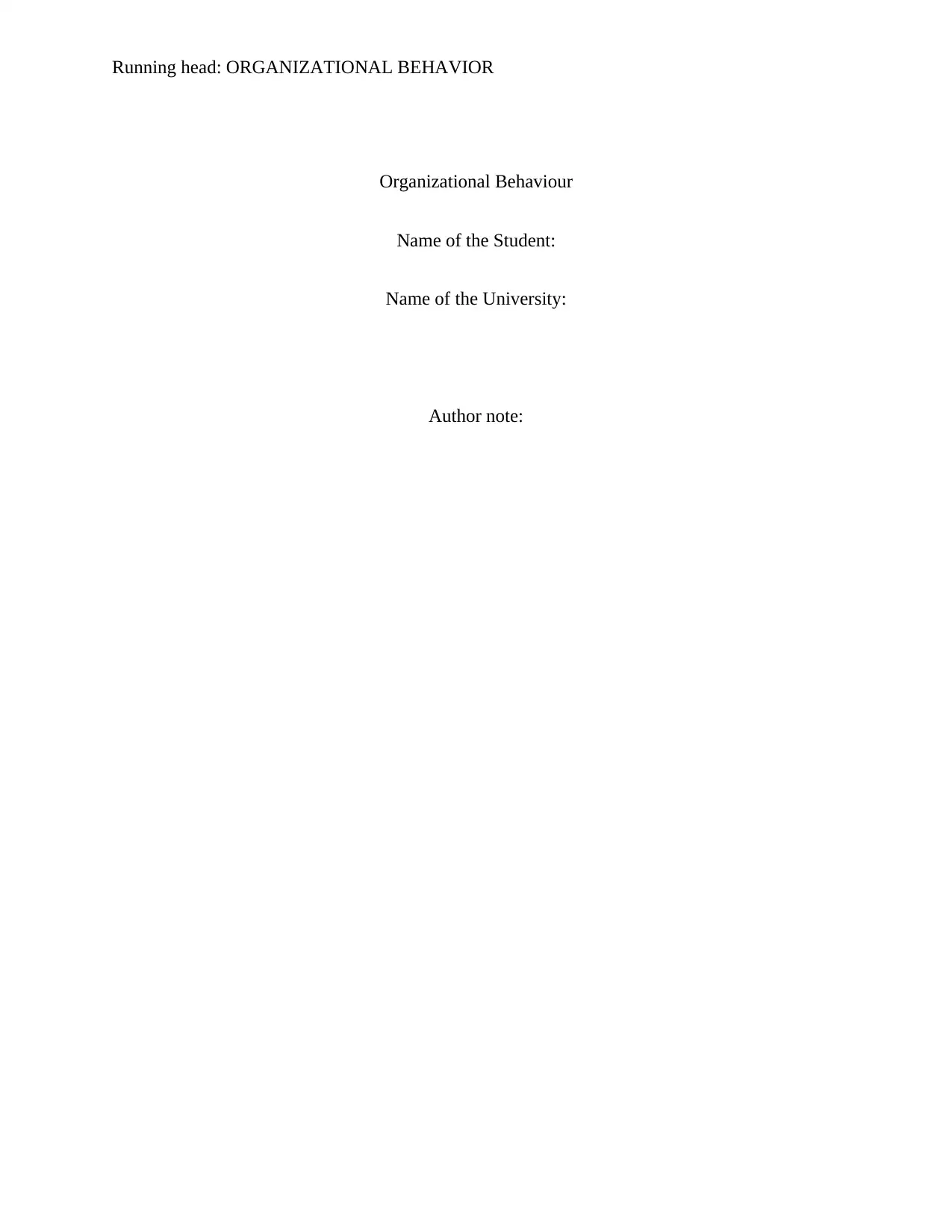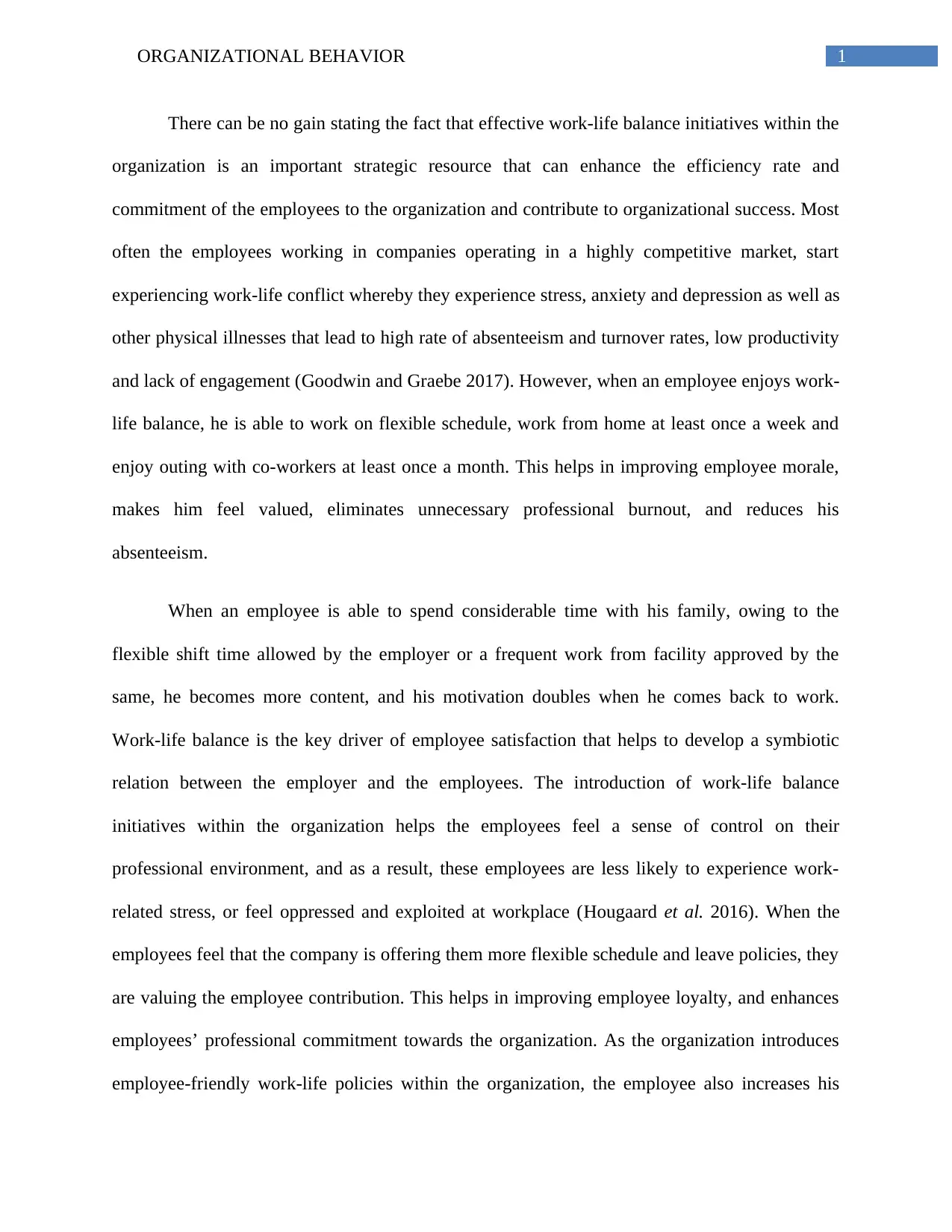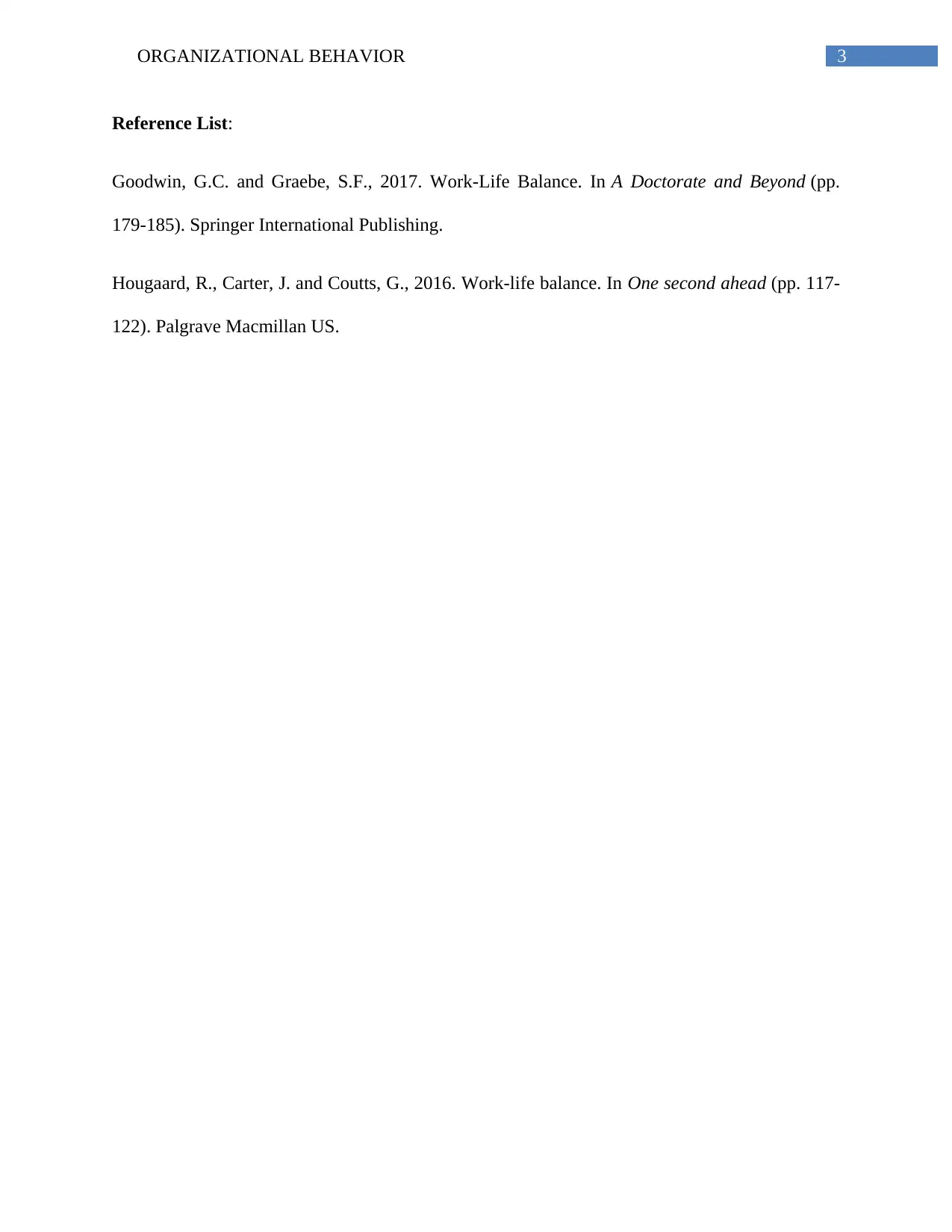University Report: Work-Life Balance and Organizational Behavior
VerifiedAdded on 2020/03/16
|4
|440
|231
Report
AI Summary
This report delves into the significance of work-life balance within organizational behavior. It highlights how work-life balance initiatives, such as flexible schedules and work-from-home options, can significantly enhance employee satisfaction, reduce stress, and improve overall engagement. The report emphasizes the symbiotic relationship between employers and employees when work-life balance is prioritized, leading to increased employee loyalty, reduced absenteeism, and improved organizational performance. The report references Goodwin and Graebe (2017) and Hougaard et al. (2016) to support the claims that work-life balance leads to a more engaged and productive workforce, resulting in better market performance and profit-sales growth. The research suggests that when employees feel valued and have control over their professional environment, they are less likely to experience work-related stress, ultimately benefiting both the individual and the organization.
1 out of 4











![[object Object]](/_next/static/media/star-bottom.7253800d.svg)